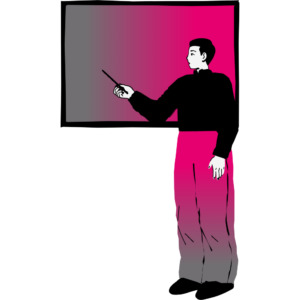Everything to Know About the Americans with Disabilities Act (ADA) and Video Compliance
A Practical Guide to WCAG Video Accessibility Requirements [Free Guide]
The Americans with Disabilities Act (ADA) is the most far-reaching piece of accessibility legislation in the United States. However, because the ADA was first introduced in 1990, it did not specifically address digital or web accessibility…until now.
Fast forward to April 2024–34 years after its introduction into U.S. law, the Justice Department (DOJ) announced that they would publish “a final rule under Title II of the Americans with Disabilities Act (ADA) to ensure the accessibility of web content and mobile applications (apps) for people with disabilities.”
So what does this update mean for ADA web video compliance?
In this blog, we’ll give you a high-level overview of the ADA, explore how Titles II and III of the ADA apply to web accessibility, learn what the DOJ’s new rule means, and share tips for making your videos accessible and ADA-compliant.
Overview of the Americans with Disabilities Act (ADA)
Enacted in 1990, this civil rights statute was created to limit discriminatory practices towards individuals with disabilities. This act and its amendments guarantee equal opportunity for persons with disabilities in employment, state and local government services, public accommodations, commercial facilities, and transportation. Both public and private entities are affected by the ADA–it is the responsibility of these entities to provide equal access through accommodations to suit a disabled individual’s needs.
Disabilities covered under the ADA can be physical (e.g., muscular dystrophy, dwarfism, etc.), sensory (e.g., blindness, D/deafness, deaf-blindness), or cognitive (e.g., Down Syndrome). In 2008, the Americans with Disabilities Amendment Act broadened the scope of how disability is legally defined: psychological, emotional, and physiological conditions are now included.
The Americans with Disabilities Act consists of five sections overseeing different aspects of life and an individual’s engagement with society:
- Title I: Employment
- Title II: Public Entities
- Title III: Public Accommodations
- Title IV: Telecommunications
- Title V: Miscellaneous Provisions
ADA Video Accessibility Compliance
The ADA considers captioning and audio description to be “auxiliary aids” in communication. “Auxiliary aids” are assistive technology, services, or devices for people with disabilities, allowing equal access to goods or services provided to the public. Captions and audio description are examples of assistive technology that help make online and broadcasted videos accessible.
The recent new rule under Title II of the ADA lists web video captioning as a requirement for state and local government entities (including public schools and universities). Private entities are not yet affected, but the rule sets new precedence for web video accessibility and supports previous ADA lawsuit outcomes.
Both Title II and Title III of the ADA have been interpreted to apply to web accessibility and video captioning in various ADA-based lawsuits over the past couple of decades. Let’s take a closer look at these Titles to discover how they’re used.
ADA Title II: State and Local Public Entities Must Be Accessible
Title II prohibits disability discrimination by all public entities at the federal, state, and local level. For example, schools, courts, police departments, public libraries, and public universities must comply with Title II. Compliance is required regardless of whether they receive federal funding.
Title II mandates that state and local governments:
- May not refuse to allow a person with a disability to participate in a service, program, or activity simply because the person has a disability.
- Must provide programs and services in an integrated setting, unless separate or different measures are necessary to ensure equal opportunity.
- Must furnish auxiliary aids and services when necessary to ensure effective communication, unless an undue burden or fundamental alteration would result.
- Must operate programs so that, when viewed in their entirety, they are readily accessible to and usable by individuals with disabilities.
Under Title II, publicly available videos, whether for entertainment or informational use, must be made accessible to individuals with disabilities. That means including captions on videos both in person and online so that people who are D/deaf or hard of hearing can access public services. Websites for public entities should also be fully accessible to users who are D/deaf, blind or have limited dexterity.
Title II also applies to employment in public entities, meaning disabled employees must not be barred from performing responsibilities because of inaccessible processes or procedures. State and local entities need to caption videos for internal communication and training, as well as public-facing material.
The ADA’s New Final Rule Under Title II
The recent update to Title II requires conformance to Web Content Accessibility Guidelines (WCAG) 2.1, Level AA, making it the official technical standard for state and local governments’ web content and mobile apps.
WCAG 2.1 AA requires the following for web videos:
- Captions are provided for all prerecorded audio content in synchronized media, except when the media is a media alternative for text and is clearly labeled as such.
- Captions are provided for all live audio content in synchronized media.
- Audio description is provided for all prerecorded video content in synchronized media.
ADA Title III: Places of Public Accommodation
Commercial entities – such as hotels, libraries, museums, train stations, airports, restaurants, movie theaters, retail stores, and hospitals – are covered by Title III of the ADA.
Under Title III, no individual may be discriminated against on the basis of disability with regards to the full and equal enjoyment of the goods and services at any place of public accommodation.
What is a Place of Public Accommodation?
The three criteria of a “place of public accommodation” are:
- It must be operated by a private entity
- Its operations must affect commerce
- It must fall within one of the following 12 categories
12 Categories of Public Accommodation
- Places of lodging.
- Establishments serving food or drink.
- Places of exhibition or entertainment.
- Places of public gathering.
- Sales or rental establishments.
- Service establishments.
- Stations used for specified public transportation.
- Places of public display or collection.
- Places of recreation.
- Places of education.
- Social service center establishments.
- Places of exercise or recreation.
For a more detailed list of the organizations that fall under ‘place of public accommodations,’ check the ADA’s definition section.
Does the ADA Title III Apply to Online Businesses?
Before the internet became so ubiquitous, it was assumed that the ADA applied only to physical structures. But because the law didn’t specifically state whether it applied to brick-and-mortar vs. digital “places,” it became open to interpretation.
A string of high-profile lawsuits against private companies for inaccessible websites, web services, or digital communications, has created a precedent that the ADA applies to the internet.
This precedent has only strengthened over time, with UsableNet reporting an increase in web accessibility lawsuits against private organizations annually, and the DOJ’s recent rule mandating digital accessibility rules for Title II, which covers state and government entities.
Let’s take a look at a few important disability discrimination lawsuits to get a sense of how the ADA has historically been interpreted to apply to the web.
ADA Lawsuits on Web Accessibility
NFB v. Target and EEOC & NAD v. FedEx
The National Federation of the Blind (NFB) sued Target Corporation over its public retail website in 2006. The NFB claimed that blind people were unable to access much of the information on Target’s site and could not purchase anything independently. The NFB and Target Corporation reached a settlement in 2008 and was one of the first major cases that helped define the relationship between the internet and the ADA.
FedEx was sued by the Equal Employment Opportunity Commission (EEOC) and the National Association of the Deaf (NAD) in 2014. The suit alleged failure to provide ASL interpreters, closed captioning for training videos, and modifications to equipment. In 2020, FedEx settled with the EEOC under a Consent Decree.
NAD v. Netflix
In 2010, Netflix was sued by the NAD for discriminating against D/deaf and hard-of-hearing viewers due to insufficient closed captions. This marked the first interpretation of the ADA applying to online-only businesses. In 2012, Netflix settled by agreeing to caption all content retroactively and going forward. The settlement leaves room for debate on ADA application to online-only businesses.
Similar lawsuits were brought against streaming giants Hulu and Amazon a few years later.
NAD v. Harvard and MIT
In 2015, the NAD sued Harvard and MIT over concerns that the universities were not providing equal access to online programming for students with disabilities. The NAD cited violations of the ADA and the Rehabilitation Act. Notably, these lawsuits were the first of their kind to address the accuracy and quality of the captions provided.
In 2019, the NAD and Harvard came to an agreement through a Consent Decree that establishes captioning guidelines, citing 3Play Media’s high accuracy as an example. The NAD and MIT settled in 2020 under a similar agreement.
Department of Justice (DOJ) & NAD vs. UC Berkeley
The NAD filed a complaint in 2014 against UC Berkeley, citing the lack of closed captions in its online courses and content. The DOJ validated the complaint and required UC Berkeley to rectify ADA violations, leading to an investigation that broadened to encompass overall media and web accessibility for all learners.
In 2022, UC Berkeley and the Department of Justice (DOJ) reached an agreement regarding the accessibility of the university’s online content, ensuring its free online content is accessible to learners with a range of disabilities.
The Future of the ADA and Web Accessibility
Since 2010, the DOJ has indicated their intent to revisit Title II and Title III of the ADA and clarify its application to the internet. Over the years, through Consent Decrees and Dear Colleague letters, the DOJ often pointed to WCAG guidelines as an example of what standards organizations should meet for optimal captioning and audio description compliance. However, their preference for WCAG conformance was not officially codified into law until 2024.
On April 8, 2024, the DOJ finally published the final rule to strengthen web and mobile app access for people with disabilities. The rule applies only to Title II of the ADA at this time but also signals that the DOJ is prioritizing web accessibility and aligning with worldwide preferences by citing WCAG as the standard.
According to the ADA’s press release regarding the final rule:
Other Perspectives on the ADA’s New Rule
Advocates Were Not Happy with the NPRM
When the Notice of Proposed Rulemaking (NPRM) for the new web-specific ADA rule was initially released in 2023, it was met with mixed reactions from disability rights organizations and accessibility advocates.
According to a blog by Ken Nakata, a former Senior Trial Attorney with the U.S. Justice Department’s Disability Rights Section, the NPRM placed “unmanageable burdens on state and local governments” while simultaneously managing to “to pull the rug from under the feet of the disability community.”
Nakata further explained that the original iteration of the NPRM:
- Took an all-or-nothing approach by forcing every government web page to be WCAG compliant while concurrently proposing many exemptions. This would either push government entities to spend exorbitant amounts on remediation or cause entities to claim undue burden and make nothing accessible. The National Federation of the Blind (NFB) broke down the exemptions in their comments on the NPRM.
- Password-protected public school content was considered an exception, which undermined the rights of students with disabilities. Association on Higher Education and Disability (AHEAD) submitted comments outlining the negative impact of this exemption.
- Benefits the wrong groups–specifically serial plaintiffs and large web accessibility consultant companies.
Further issues with the NPRM are explored in depth on Nakata’s blog.
Reactions to the ADA Title II New Web Accessibility Rule
The final rule took the feedback and concerns into consideration and adjusted accordingly. In a blog update, Nakata discussed that while the final rule is an improvement from the NPRM, it still contains some nuances to consider.
What some advocates like about the new rule:
- The DOJ removed the exemption of password-protected educational content, ensuring the rights of students with disabilities are still upheld.
- The rule allows for flexibility on public websites by making it a civil rights issue instead of a technology requirement. This is not an “out” for state and local governments, but rather enables them to focus on providing equivalent access to programs if WCAG 2.1 isn’t attainable. Civil rights law firm Brown, Goldstein & Levy note in their blog that this aspect could be further developed in the courts.
- A phase-in period of two to three years to become compliant, depending on population. This permits governments to plan ahead and avoid a last-minute rush to remediate web content.
Aspects of the new rule to consider:
- WCAG 2.1 is not the latest standard. While 2.1 is well-established, WCAG 2.2 was published in 2023, and WCAG 3 is expected in the future. Many accessibility advocates recommend conforming to the latest version for optimal web accessibility.
- WCAG can be difficult to apply to mobile applications because of differing standards and software parameters. Workarounds will likely need to be developed to meet WCAG or provide equivalent conformance.
- A public entity’s failure to comply with WCAG 2.1 could be allowed in cases where noncompliance has minimal impact on access for people with disabilities. However Brown, Goldstein & Levy says, “It appears nonconformance with WCAG would have to be exceptionally minor and inconsequential to be permitted under this provision of the rule.”
How to Make Your Web Videos Accessible and ADA Compliant
The best way to ensure your organization is accessible to individuals with disabilities and minimize compliance risk is to use inclusive design practices for your website and digital products, which includes adding captions and audio descriptions to your organization’s web video content.
3Play’s Tips for Making Your Web Videos ADA-compliant
- Videos should have closed captions for D/deaf and hard of hearing viewers. Captions should be accurate, complete, and time-synced with the speech. Relevant sound effects should be described in the captions, like [applause] or [doorbell rings].
- Live videos should include live captioning
- Include an audio description track and transcript for blind and low vision users.
- Ensure you’re using a media player that has keyboard-operable controls to accommodate people who cannot use a mouse.
- Review WCAG 2.1 requirements for the entirety of your organization’s web presence. If you are already conforming to WCAG 2.0 requirements, then you may have fewer updates to make. Use our free WCAG checklist to help you on your web accessibility journey.
This post was originally published on June 13, 2013, by Shannon Murphey as “Americans with Disabilities Act (ADA) and Accessible Online Video Requirements,” and has since been updated for comprehensiveness, clarity, and accuracy.
This blog post is written for educational and general information purposes only, and does not constitute specific legal advice. This blog should not be used as a substitute for competent legal advice from a licensed professional attorney in your state.
Further Reading

Subscribe to the Blog Digest
Sign up to receive our blog digest and other information on this topic. You can unsubscribe anytime.
By subscribing you agree to our privacy policy.









